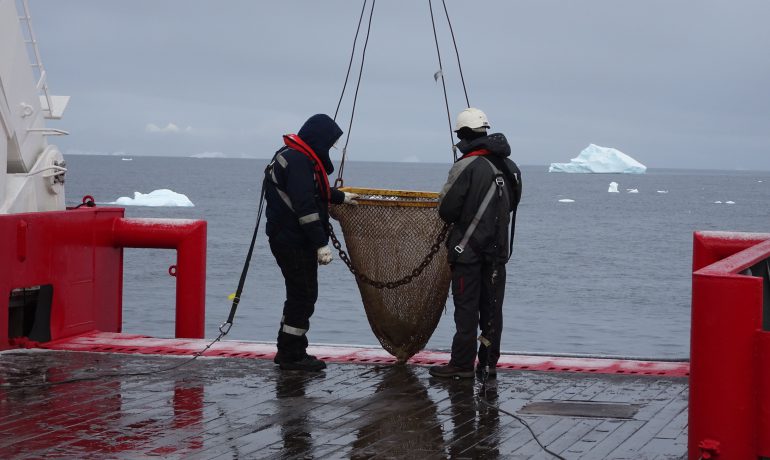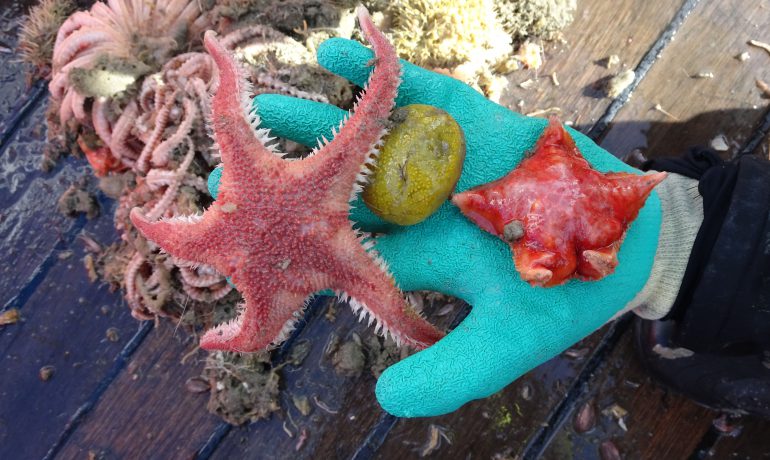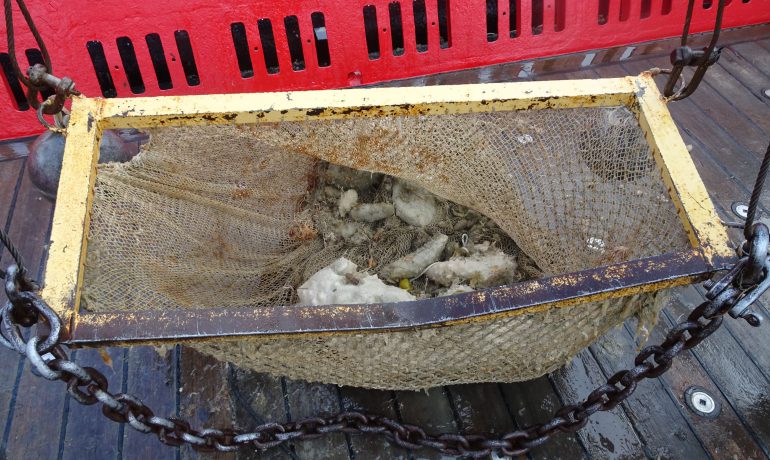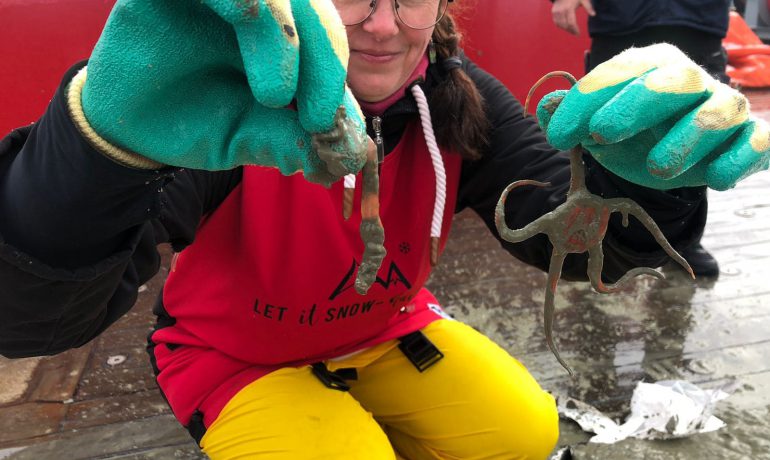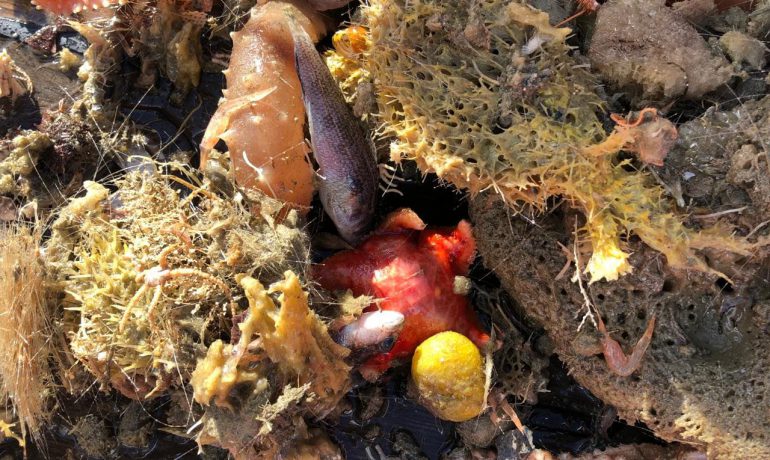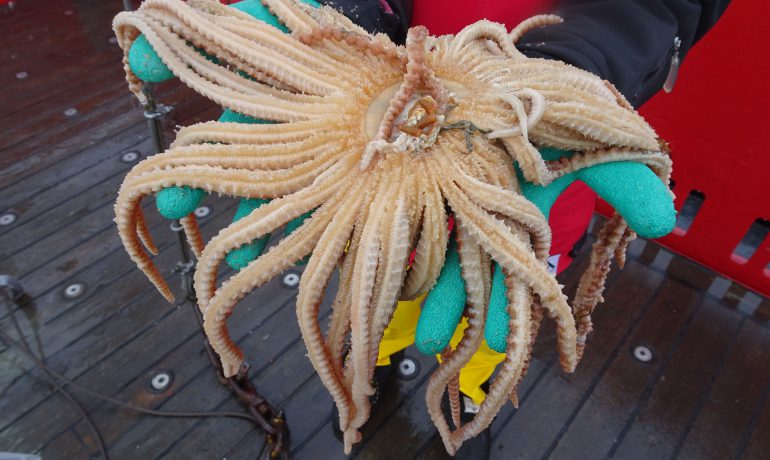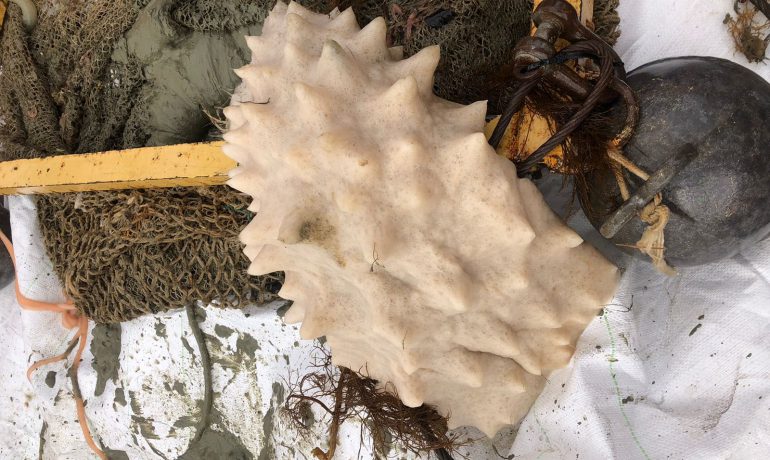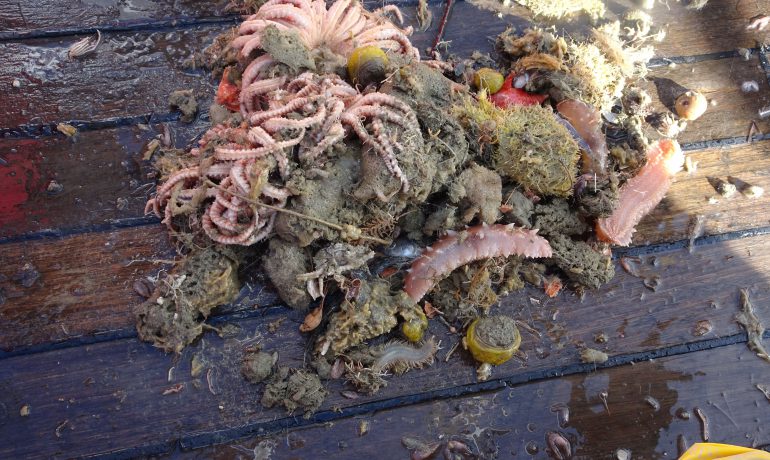A new international study has been launched on our research vessel Noosfera, which is currently in the Antarctic. As part of the cooperation between Polish and Ukrainian scientists, for the first time samples of marine fauna were taken from the bottom of the Southern Ocean.
A special bottom dredge was used to carry out the work. The study took place in the Penola Strait (near the Akademik Vernadsky station) at three different depths.
Different marine organisms were found at each of them:
- At a depth of 250 m, sponges, large starfish and holothuria (also called sea cucumbers because of their similar shape) prevailed;
- at a depth of 200 m, medium-sized starfish, snails, large polychaetes and ophiurae (also called snake-tails because of their peculiar way of moving: when they crawl along the bottom, their rays wriggle like snakes) were most common;
- at a depth of 120 m, various species of needle-skinned bryozoans and colonies of sedentary bryozoan species were collected.
The samples are now stored at the vessel in special freezers. After delivery to the laboratory on the “big land”, the scientists will extract and sequence the genetic code of the selected organisms and study how much metal is present in their mineral skeletons.
Why is this important?
One of the most advanced methods for studying marine ecosystems is environmental DNA analysis. This method can identify tens or hundreds of species of living organisms in a single water sample using specific molecular markers. This saves time and money, and causes much less environmental damage than traditional research methods that require the mandatory capture of living creatures.
However, for this method to work, it is first necessary to collect a database of DNA marker sequences of local species (barcodes), which will play a role in further research similar to that of a fingerprint database for criminalists. The first “catch” of our “Noosphere” will be used to create further a database of Antarctic fauna barcodes.
Why do you need to determine the metal content in animal skeletons? The fact is that climate change leads to an increase in the temperature of seawater and its oxidation (lowering the pH value). In more acidic and warmer water, the physiology of animals changes, in particular, they begin to absorb metals from the water much more intensively and deposit them in skeletal elements – bones, shells, carapaces, etc.
The skeleton contaminated with metals becomes weaker. In addition, water oxidation itself has a negative impact on animal shells made of calcium carbonate, as it dissolves in an acidic environment. Together with the accumulation of metals, this makes the skeleton of marine life fragile and vulnerable.
The research will help scientists to assess the sensitivity/resilience of water invertebrates to changes in the chemical composition of the Southern Ocean and identify groups that are most at risk from the effects of climate change in the Antarctic.
On the Polish side, the research is being carried out by members of the Polish Academy of Sciences and the University of Gdańsk. The current joint sampling of benthic marine fauna is the beginning of a new area of scientific cooperation between Ukraine and Poland. It is expected to develop into a longer-term joint project funded by the National Science Centre of the Republic of Poland.


